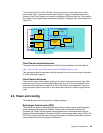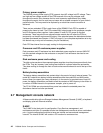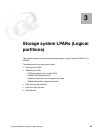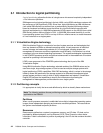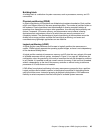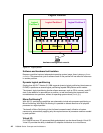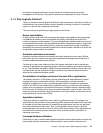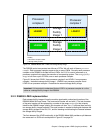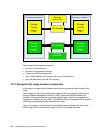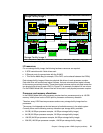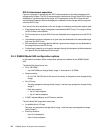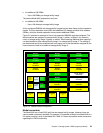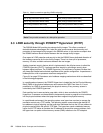Chapter 3. Storage system LPARs (Logical partitions) 47
allowing the on-demand allocation of those resources to different partitions and the
management of I/O devices. The physical resources are owned by the Virtual I/O server.
3.1.3 Why Logically Partition?
There is a demand to provide greater flexibility for high-end systems, particularly the ability to
subdivide them into smaller partitions that are capable of running a version of an operating
system or a specific set of application workloads.
The main reasons for partitioning a large system are as follows:
Server consolidation
A highly reliable server with sufficient processing capacity and capable of being partitioned
can address the need for server consolidation by logically subdividing the server into a
number of separate, smaller systems. This way, the application isolation needs can be met in
a consolidated environment, with the additional benefits of reduced floor space, a single point
of management, and easier redistribution of resources as workloads change. Increasing or
decreasing the resources allocated to partitions can facilitate better utilization of a server that
is exposed to large variations in workload.
Production and test environments
Generally, production and test environments should be isolated from each other. Without
partitioning, the only practical way of performing application development and testing is to
purchase additional hardware and software.
Partitioning is a way to set aside a portion of the system resources to use for testing new
versions of applications and operating systems, while the production environment continues
to run. This eliminates the need for additional servers dedicated to testing, and provides more
confidence that the test versions will migrate smoothly into production because they are
tested on the production hardware system.
Consolidation of multiple versions of the same OS or applications
The flexibility inherent in LPAR greatly aids the scheduling and implementation of normal
upgrade and system maintenance activities. All the preparatory activities involved in
upgrading an application or even an operating system could be completed in a separate
partition. An LPAR can be created to test applications under new versions of the operating
system prior to upgrading the production environments. Instead of having a separate server
for this function, a minimum set of resources can be temporarily used to create a new LPAR
where the tests are performed. When the partition is no longer needed, its resources can be
incorporated back into the other LPARs.
Application isolation
Partitioning isolates an application from another in a different partition. For example, two
applications on one symmetric multi-processing (SMP) system could interfere with each other
or compete for the same resources. By separating the applications into their own partitions,
they cannot interfere with each other. Also, if one application were to hang or crash the
operating system, this would not have an effect on the other partitions. Also, applications are
prevented from consuming excess resources, which could starve other applications of
resources they require.
Increased hardware utilization
Partitioning is a way to achieve better hardware utilization when software does not scale well
across large numbers of processors. Where possible, running multiple instances of an



